Opinion: Women Specific Bikes – Softened or Race Ready?
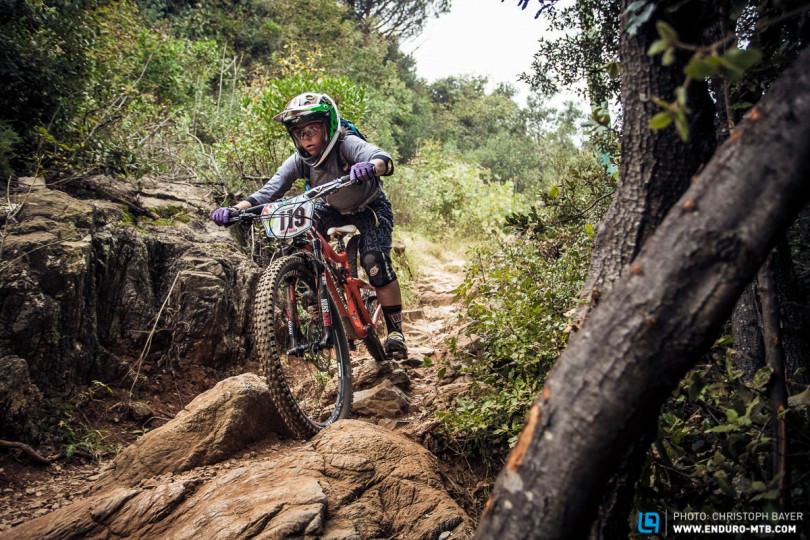
So, we all know gravity enduro is getting big, and big on a massive scale! You can see why though, its great fun, sociable and racing has as many ups and downs as a yoyo, making competing exciting for racers, spectators and followers of the sport alike. But I’m not here to tell you about racing, I’m here to investigate what the ladies in this scene get when it comes to bike choice. Do women get a fair deal or are the bikes marketed at us softened and lacking when it comes to the ideal specification and performance for enduro racing?
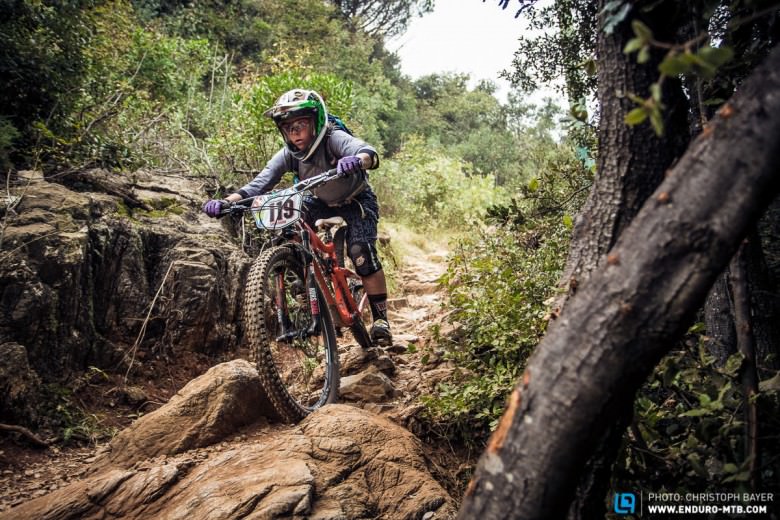
I myself ride a men’s MTB but I have always looked on at the ‘female specific’ bikes and wondered, am I missing out on something? Should I be riding a women’s specific bike or am I best off looking for a small size men’s or unisex bike? This is my chance to find out. First I need to look at what makes a good enduro bike in terms of geometry rather than specification.
The Enduro Bike
An enduro bike needs to be able to handle fast descents and take big hits but it also needs to climb well, helping to conserve the rider’s energy. As I am going to be talking mainly in terms of geometry here, I’ll stick to discussing the frame. Starting from the top with the top tube, this is going to directly affect the wheelbase so it is sometimes found on enduro bikes to be slightly longer than on less aggressive bikes. A longer wheel base is considered more stable when going downhill, therefore enduro bikes these days are generally longer than trail bikes and certainly longer than a cross country bike. On to the head tube length, the lower this is the more aggressive and lower handle bar position can be achieved.Being lower on the bike gives you greater leverage and increased maneuverability to tackle technical sections.
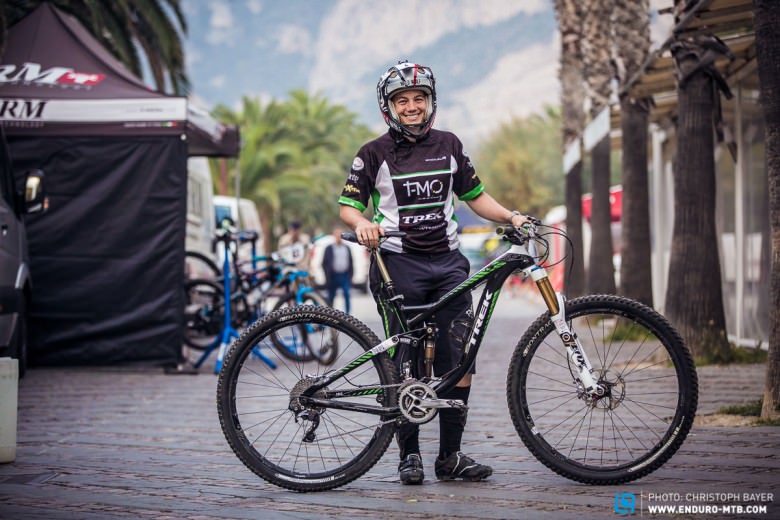
Next is the head tube angle, maybe one of the most important factors to consider as it gives the greatest feedback and can therefore affect ride, handling and confidence. A 67 degree head angle appears to be preferable when riding enduro. This provides stability at higher speeds and allows the rider to tackle rough technical terrain with relative ease. Go too slack though, and it will affect the bikes ability to climb! Onto the bottom bracket height, this is most important when taking into consideration cornering. A lower bottom bracket height creates a lower centre of gravity and therefore makes the bike easier to corner. Thought also has to be given to clearance, too low and the bike and cranks will be prone to hitting trail features.
To summarise, to race enduro you ideally need a longer, lower, slacker bike, this will be the starting point for my comparison.
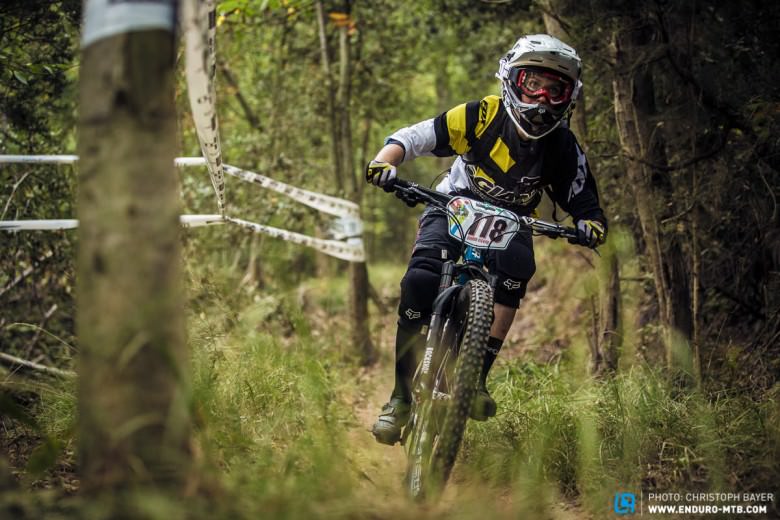
Moving beyond the ‘pink and shrink’ approach!
I have looked long and hard at the bike options open to women and scrutinized the geometry of many brands. With reference to our long, low, slack bike above I can say with confidence when it comes to providing this for the female riders out there, some companies get it and some just don’t! There are relatively few bike companies that offer an all mountain bike for women on a par with their unisex model brother. There is usually a compromise to be had somewhere be it in head angle, travel length or wheelbase length. I compared a unisex all mountain bike from seven of the largest bike manufactures against the women’s specific model from the same company. For the women’s specific model I compared the company’s most aggressive women’s bike available or as close to an enduro bike as I could manage.
From purely comparison of the geometry on paper, a steeper head angle was found in five of the women’s bikes, four of them had shorter wheel bases on the female specific models with one company not publishing these details at all. Lastly, four of the women’s bikes held disparities in the travel length of the nearest comparable unisex bike, with the female specific bike making do with less travel on all of these 4 occasions. Steeper head angles, shorter wheel bases and less travel on stock production bike as you and I would buy spells out compromise to me. Female riders at the top of their game won’t want compromise. Compromise in the English Oxford Dictionary is defined as:
“the expedient acceptance of standards that are lower than is desirable”
Now correct me if I’m wrong but I don’t think competitive racers, who sight winning as their goal, will accept something ‘lower than desirable’ regardless of which race it is at whatever level. I know I don’t, maybe that’s why I’m riding a unisex bike? Compromising doesn’t win the Enduro World Series does it? No. So maybe that’s why Tracy Moseley is riding a unisex Trek Remedy.
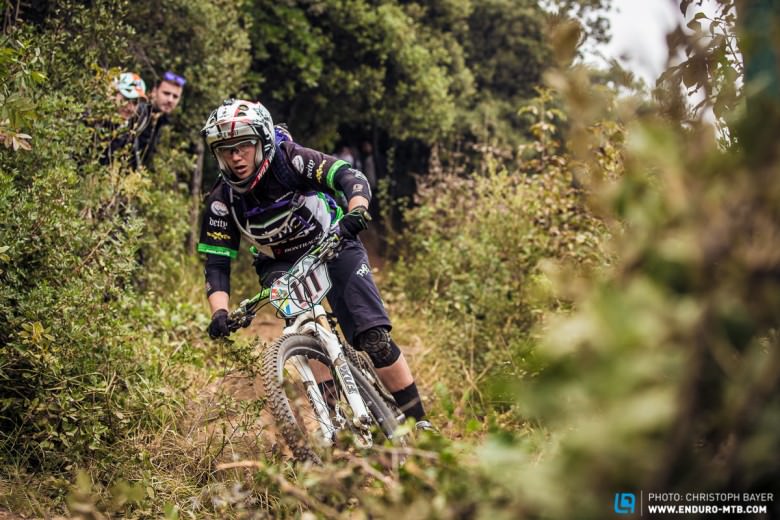
Speaking to Tracy, she told me that she didn’t think a female rider has to ride a female specific bike for it to work for them. She realises that sometimes a women’s specific bike will provide the best option but every person and situation is different. Tracy states: “I really do think it should be about bikes to suit different body types and size rather than gender specific as there may be some small men that would benefit from the geometry of some women’s specific bike”.
Can you imagine that though? A man on a bike branded as women’s specific? Even if it fitted him, do you think he would put up with all the ribbing he got from his mates on the trails? Maybe the answer here is to do away with women’s and men’s labelling and for manufacturers to make a larger size range and specifications list so we can all tailor our own bikes? Sizing is a big issue facing the smaller lady when choosing an all mountain or enduro bike. Often it is only the women’s specific bikes that will have a size small enough to fit. After my research I found a majority of unisex bikes start with size small being 15.5”. I usually ride a 15” bike and really feel the benefits of this small bike. I’m sure I could ride a slightly bigger bike if push came to shove, in fact I have just got on a 16” 29er and love it, but will this be the same for all bikes? – I doubt it. Here’s that word again – compromise. With regards to Tracy’s own bike, she states she is happy on a 17.5 inch unisex bike and finds the 29er Trek Remedy comes up pretty short in the top tube compared to other brands so finds the fit perfect for her.
If you wanted firm evidence that bike companies aren’t producing female specific bikes ready for enduro then look no further than Anka Martin. Anka is a brilliant female racer from New Zealand riding a Juliana…. Hers is not just any Juliana though, the burliest stock bike is the Furtado, it comes with 125mm forks whilst Anka’s boasts 160mm Pikes up front. Why, we ask? Simply put 125mm just won’t cut it down the Megavalanche or riding the Trans Provence. Anka echoes Tracy’s thoughts about women’s bikes, she believes as long as the bike fits and works for that person then that is all that matters. Anka did also mention that some women like to be branded differently and seen as a separate group, I think this what brands such as Orange are trying to exploit with the Diva – see below.
Anka has also explained a bit about Juliana bike and their design. They are based on Santa Cruz frames with tapered handlebars and narrower grips to match along with women specific saddles. Juliana also offer smaller sizes for petite riders, all great stuff but not exactly making the bikes enduro race ready is it? Lastly Anka gave me a little gem on terms of a piece of information…..she calls her bike a ‘Juliana Bronson’…..I may as well just stop there! Is there any further investigation needed? This surely confirms women specific bike just are not up to scratch, Anka’s bike is a Santa Cruz Bronson masquerading as a Juliana! Juliana has now released a new bike – the Roubion, maybe this is the ultimate female specific enduro race bike? We will wait and see, I’m sure Enduro Mountain Bike Magazine will test it soon!
Juliana Bikes aren’t alone here, enduro racer Kelli Emmet does the same with her Giant Intrigue, swapping in 160mm forks instead of the 140mm forks the bike is originally fitted with. I spoke to Kelli and she confirms that she needs this extra travel for the burlier tracks found in the Enduro World Series so therefore runs Rockshox 160mm Pike’s. Kelli is also sponsored by SRAM so has replaced all her components as such, this is pretty normal for top riders.
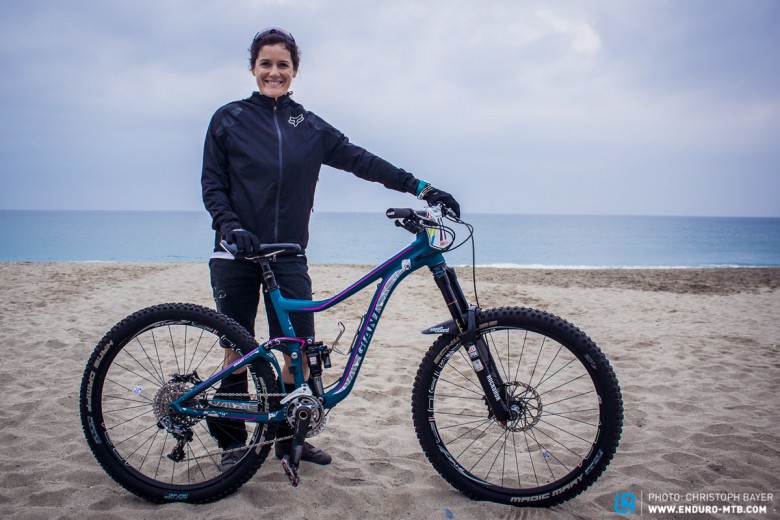
Surely women in the UK and overseas deserve a similar specification to these ladies? Purchase of the Furtado and Intrigue does not make financial sense if enduro racing is your aim as next on the shopping list will be a new, burlier, longer set of forks. In fact in all my searching I only came up with two brands that offer a like for like bike for both sexes. This got me thinking, do women need their own specific models? There’s one big brand, Orange, that produce a unisex bike and a women specific bike that are identical in geometry. The only difference that I can see is, wait for it….. the saddle! Which you can bet your bottom dollar is uncomfortable and you will only go and put your old faithful one on this new bike! Now in some respects this is great, no compromise, the same performance and a level playing field with the boys. In other respects though I do wonder, what is the point of this bike? It’s not any smaller, it’s not any cheaper or more expensive and it’s not really “female specific”, so what is it for?
After speaking to Sim Mainey the Marketing Manager at Orange Bikes, he told me that Orange make no attempt to disguise the fact that the Alpine 160 and the Alpine 160 Diva are exactly the same. Sim recognises that everybody tailors their own bike spec to suit them and is ready to answer the big question – Why bother with a womens range at all if the frames are the same? Sim replies: “We’ve found that having the Diva name gives an easy and obvious entrance point to women looking at the Orange range. It might be that after looking at the Divas they choose a non-Diva version but it acts as a good starting place from which to make an informed buying decision”. Ahhh….. here we go, that’s more like the answer I was looking for! It makes sense, Why not do something that will cost relatively little (a new paint job and saddle) but could potentially reap rewards in drawing in a bigger customer base.
A separate brand, this time in the form of Commencal, does slightly better in these stakes. They have named their bike the Commencal Girly (no mistaking who this is for then!) They have shortened the top tube of their female all mountain bike but kept the wheelbase exactly the same as its unisex counterpart. Interesting feature and not something I found elsewhere. Without testing it, I’m unable to tell you how this feels when ridden or if this works or not. In theory though, this makes sense. A shorter top tube will allow women who are shorter in the body to be more at home in the cockpit whilst keeping the wheel base long allows the bike to have the same stability as a unisex bike.
It is time to talk money though and I feel I have hit on the crux of the investigation. Women riders and women enduro racers clearly take up a smaller portion of the market compared to men and therefore it makes sense that they would be offered less choice than their male counter parts when it comes to the variety of bikes available to them. It does beg the question, however, why do Orange and Commencal think it is worthwhile to produce a women’s specific enduro bike that is directly comparable to the unisex model whilst other companies do not?
Trek are a prime example, they produce the Lush which is women’s specific. On speaking to Ross at Trek, he says Trek feel that the women’s specific bikes that they currently produce meet the needs and desires of most women but as more women join the fast growing segment of the sport then they will explore opportunities to ‘enhance the experience‘ of these women by producing a long travel women specific design bike. Ross also stated that Trek don’t feel the need to produce a bike that differs only in touch points (grips and saddle) from the unisex model, as Orange do with the Alpine 160 Vs. Alpine 160 Diva. They do see the benefit of this tactic in road and town bikes but not mountain bikes – I guess we would only find out if it does indeed tempt riders in to looking at the brand
by comparing their figures.

Through this, I am struggling to see what some production female specific bikes will offer the lady enduro racer. Most, but not all, have shown there is less choice and there will be compromise in some form which may inhibit performance. When comparing this to a unisex bike, the choices there are unparalleled. With so many different bikes on offer fit for the toughest of enduro races, as long as the bike is physically fitted the rider then any female rider would be mad to settle for a bike where they had to make some kind of concession. I understand the economic factors at play here, with less women than men in the market for an enduro bike, companies are of course less likely to produce the range of bikes needed to tempt every kind of female rider.
As a side note both Kelli and Anka allude to their respective sponsors dabbling in the test bikes for women in the realms of 160mm travel so I guess we watch this space! I also understand there are many more female riders, happily riding the women’s specific bikes currently produced every day, with no impetus to race and enjoying them immensely. This is the market where I see women’s specific bikes being targeted. I get this, in terms of dollar, this makes manufacturing sense. So, until enough women need the big hitting all mountain bike to make financial sense, we will continue racing our unisex bikes. Securing the geometry we require of the frame, then tweaking the bike build to perfection by our own alterations.
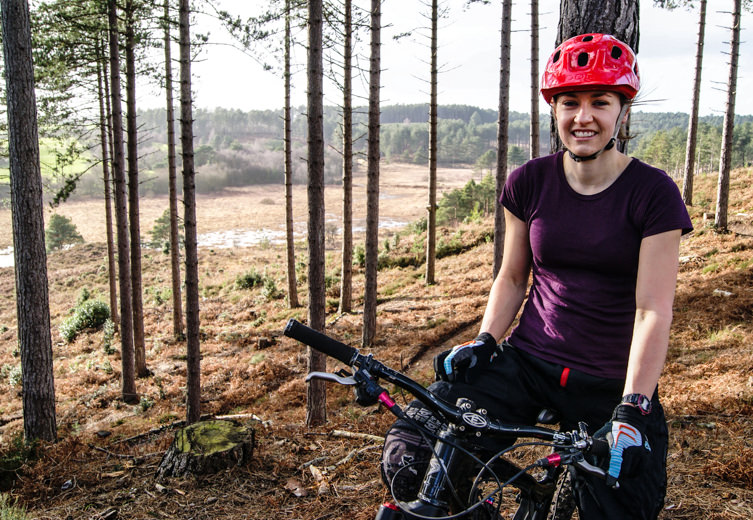
Words: Rachael Gurney
Did you enjoy this article? If so, we would be stoked if you decide to support us with a monthly contribution. By becoming a supporter of ENDURO, you will help secure a sustainable future for high-quality mountain bike journalism. Click here to learn more.







